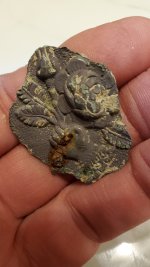KGCnewbieseeker
Sr. Member
In the long and colorful history of the La Plata Mountains of southwest Colorado, the 19th Century pioneer John Moss figures prominently. John Moss was both prospector and entrepreneur. He made a number of strikes in the La Plata Mountains including the one that really got the mining district going and also successfully negotiated with the local Ute Indians for use of the country. John Moss left his mark on the La Platas and is commemorated by having a mountain named for him - Mount Moss. It is located about 5 miles north of the site of John Moss's original gold strike.
John Moss was in the La Plata country prior to the Brunot Treaty of 1873. While exploring the La Plata Canyon, Moss discovered rich deposits of gold. He collected samples of the ore and then traveled all the way to San Francisco to secure financial backing to develop a mining district centered in the La Platas. A banker named Tiburcio Parrott took him up on his offer - accordingly, the mining camp that sprang up near the mouth of the La Plata Canyon was changed from Camp Moss to Parrott City. Naturally, the mountain overlooking the camp was christened Parrott Peak.
Parrott City was founded by John Moss in 1874. The mining camp was initially based on the placer mining activities at the mouth of the La Plata Canyon. By the mid-1870's, prospectors were swarming into the area. One of the many prospectors who showed up in Parrott City during its boom years was a young adventurer named Milton Hollingsworth. Hollingsworth spent a number of years working in the local mines. He had followed veins in the Comstock, Southern Boy, and Cumberland mines and knew good ore when he saw it.
The turn of the 19th Century came and went and Hollingsworth still made his living in the La Plata mines. Then, one day in October of 1901, he made the strike of a lifetime. While hunting on Parrott Peak, along the ridge separating Root Creek from Snowslide Draw, Hollingsworth stumbled on a rich vein of sylvanite ore. Breathless with excitement, he looked around and took his bearings. From the ridge, he could see the Southern Boy Mine on the other side of the canyon. He had worked in the Southern Boy prior to his discovery. He could also see the tailings from the Gold King Mine on the south side of Lewis Mountain, near La Plata City. Hollingsworth descended the mountain with his pack filled with heavy ore.
The samples of sylvanite ore assayed out at $40,000 per ton! Hollingsworth was ecstatic. Unfortunately, when he attempted to relocate the vein, he was unable to find it. He searched for two summers and then finally broke down and took on a partner. Alas, the extra pair of eyes turned out to be no help at all. They never did find the vein of sylvanite. The Lucky Moon Mine is located in the same general area. Some geologists and mining men have suggested that Hollingsworth's lost lode is actually an offshoot of the Lucky Moon vein.
John Moss was in the La Plata country prior to the Brunot Treaty of 1873. While exploring the La Plata Canyon, Moss discovered rich deposits of gold. He collected samples of the ore and then traveled all the way to San Francisco to secure financial backing to develop a mining district centered in the La Platas. A banker named Tiburcio Parrott took him up on his offer - accordingly, the mining camp that sprang up near the mouth of the La Plata Canyon was changed from Camp Moss to Parrott City. Naturally, the mountain overlooking the camp was christened Parrott Peak.
Parrott City was founded by John Moss in 1874. The mining camp was initially based on the placer mining activities at the mouth of the La Plata Canyon. By the mid-1870's, prospectors were swarming into the area. One of the many prospectors who showed up in Parrott City during its boom years was a young adventurer named Milton Hollingsworth. Hollingsworth spent a number of years working in the local mines. He had followed veins in the Comstock, Southern Boy, and Cumberland mines and knew good ore when he saw it.
The turn of the 19th Century came and went and Hollingsworth still made his living in the La Plata mines. Then, one day in October of 1901, he made the strike of a lifetime. While hunting on Parrott Peak, along the ridge separating Root Creek from Snowslide Draw, Hollingsworth stumbled on a rich vein of sylvanite ore. Breathless with excitement, he looked around and took his bearings. From the ridge, he could see the Southern Boy Mine on the other side of the canyon. He had worked in the Southern Boy prior to his discovery. He could also see the tailings from the Gold King Mine on the south side of Lewis Mountain, near La Plata City. Hollingsworth descended the mountain with his pack filled with heavy ore.
The samples of sylvanite ore assayed out at $40,000 per ton! Hollingsworth was ecstatic. Unfortunately, when he attempted to relocate the vein, he was unable to find it. He searched for two summers and then finally broke down and took on a partner. Alas, the extra pair of eyes turned out to be no help at all. They never did find the vein of sylvanite. The Lucky Moon Mine is located in the same general area. Some geologists and mining men have suggested that Hollingsworth's lost lode is actually an offshoot of the Lucky Moon vein.



